75th anniversary of D-Day
Issue date: 19th June 2019
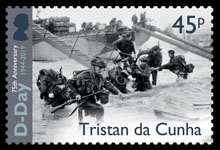 |
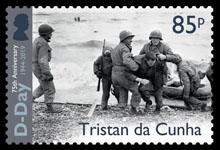 |
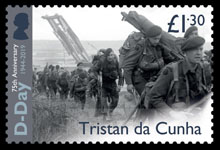 |
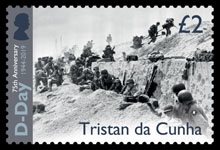 |
| 201905 | Mint Stamps (45p, 85p, £1.30, £2.00) | £4.60 |
| 201906 | First Day Cover (with 45p, 85p, £1.30, £2.00 stamps) | £5.60 |
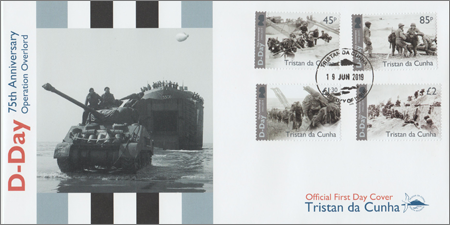
June 2019 marks the 75th anniversary of D-Day.
On 6 June 1944, Allied forces launched the largest combined naval, air and land operation in the history of warfare. The combined assault on Nazi-occupied France was codenamed Operation 'Overlord' and the Allied landings on the Normandy beaches marked the start of a long and costly campaign to liberate north-west Europe from German occupation.
Normandy was chosen because of its close proximity to the British coast, thus allowing Allied aircraft to effectively support troops landing during the initial phase of the assault (Operation Neptune). Also, the German defences along this stretch of the coastline were less formidable than in the north as the German Command expected the Allies to land where the Channel was at its narrowest.
The invasion was conducted in two main phases - an airborne assault and amphibious landings. Shortly after midnight on 6 June, over 18,000 Allied paratroopers were dropped into the invasion area to provide tactical support for infantry divisions on the beaches. Allied air forces flew over 14,000 sorties in support of the landings and, having secured air supremacy prior to the invasion, many of these flights were unchallenged by the Luftwaffe.
Nearly 7,000 naval vessels, including battleships, destroyers, minesweepers, escorts and assault craft then took part in Operation 'Neptune', the naval component of 'Overlord'. Naval forces were responsible for escorting and landing over 132,000 ground troops on the beaches. They also carried out bombardments on German coastal defences before and during the landings and provided artillery support for the invading troops.
The ground troops landed across five assault beaches - Utah, Omaha, Gold, Juno and Sword. Despite poor weather conditions and fierce resistance from German units the operations were successful and by the end of the day, the Allies had established a foothold along the coast and could begin their advance into France.
D-Day was mostly an Anglo-American effort: British, American and Canadian troops made up most of the numbers, but no less than 17 Allied countries participated on the ground, the sea and in the air. The landings of 6 June 1944 entered history under the now legendary name of D-Day.
Similar sets of D-Day stamps are being issued by Ascension Island and the Falkland Islands.
Stamp Design Details
| 45p | - | Royal Marine Commandos of headquarters, 4th Special Service Brigade, making their way from LCI(S) landing craft onto the 'Nan Red' sector of Juno Beach at St Aubin-sur-Mer, on the morning of 6 June 1944. Photographed by Handford (Lt), No. 5 Army Film & Photographic Unit. |
| 85p | - | A survivor from a sunk American landing craft being helped ashore, Omaha assault area, 6 June 1944. Photographed by Rosenblum Walter, 163rd Signal Photographic Company, 1st US Army. |
| £1.30 | - | Commandos of 1st Special Service Brigade move inland from Queen Red beach, Sword area, 6 June 1944. A Churchill AVRE, equipped with a small box girder bridge, can be seen in the background. Photographed by Evans, J L (Capt), No. 5 Army Film & Photographic Unit. |
| £2.00 | - | Troops of US VII Corps move over the sea wall on Uncle Red beach, UTAH area, 6 June 1944. Photographed by United States Army Signal Corps. |
| FDC | - | A Sherman Firefly of 22nd Armoured Brigade, 7th Armoured Division is photographed coming ashore from an LST (Landing Ship Tank), Gold area, 7 June 1944. Photographed by Laing (Sgt), No. 5 Army Film & Photographic Unit. |
Technical Specifications from Pobjoy Mint Ltd.
| Photographs: | © Imperial War Museums | Designer: | Bee Design |
| Printer: | Cartor Security Printing | Stamp size: | 42 x 28mm |
| Process: | Stochastic Lithography | Perforation: | 13¼ x 13½ per 2cms |
| Production Co-ordination: | Creative Direction (Worldwide) Ltd | Sheet layout: | 10 |
